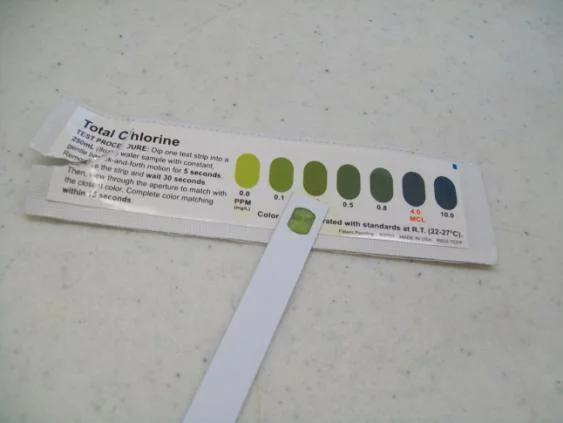1. Label the test tubes with their number and appropriate name; #1 Control, #2 Canadian Guideline, and #3, #4, #5, #6. 2. Pour the 50 mL of Canadian Guideline into the #2 test tube.
Copper Analysis for High School Operation Water Drop
Copper is naturally present in the environment, but the levels of contamination can be increased around agricultural land (manure spreading), near smelting facilities, and phosphate fertilizer plants, there is also significant amounts of copper released from wastewater treatment plants. The copper piping in most buildings that we consume water from also can contribute to our intake, depending on the corrosiveness of the water.
Copper Analysis Instructions for High School in PowerPoint and Video Format
Iron Analysis for High School Operation Water Drop
The direct health implications of iron are very limited, there are however indirect problems some of which are: colour, which comes from iron in a particulate form which is too small to filter so you get “coloured water”, iron bacteria, this is when bacteria and iron form a slime which can lead to poor pipe flow, this can occur when the iron concentration exceeds 0.3 mg/L, the Canadian Drinking Water Guideline (CGLS).
Iron Analysis Instructions for High School in PowerPoint and Video Format
Manganese Analysis for High School Operation Water Drop
Most countries, including Canada, have set an aesthetic rather than a health guideline for manganese. The reason for this is that levels above the guideline can stain porcelain and laundry, drinks such as coffee and tea can become cloudy and taste funny. High manganese levels can also cause diarrhea.
Manganese Analysis Instructions for High School in PowerPoint and Video Format
Nitrate Analysis for High School Operation Water Drop
There are many negative health effects related to Nitrate, some of which include blood deficiencies, thyroid problems, decreased vitamin A, and cancer. It is, however, rare that nitrate levels are above the Canadian Water Quality Guideline for drinking water. Contaminated private wells are likely the most common place where high levels of nitrate are found.
Nitrate Analysis Instructions for High School in PowerPoint and Video Format
pH Analysis for High School Operation Water Drop
pH Analysis Instructions for High School in PowerPoint and Video Format
Sulphate Analysis for High School Operation Water Drop
Sulphate Analysis Instructions for High School in PowerPoint and Video Format
Total Chlorine for High School Operation Water Drop
Studies have shown that when total chlorine levels drop below recommendations, several water quality problems can occur. With regard to public health, bacteria and selected viruses, called bacteriophages, are able to multiply in water that is not properly disinfected and, depending on the species, could potentially cause waterborne illnesses
Total Chlorine Analysis Instructions for High School in PowerPoint and Video Format
Total Hardness Analysis for High School Operation Water Drop
Total Hardness Analysis Instructions for High School in PowerPoint and Video Format
High School Operation Water Drop Student Evaluation
Watch the Downstream Film and Panel Discussion Webinar
Downstream Lesson Plan
This lesson should follow a lesson on colonialism. Focus on how colonialism is a part of Canada’s past as well as Canada’s present. Try to avoid talking about those individuals who lost or those individuals who won. Instead focus on what happened, what is happening and what we can do to create positive change.

























